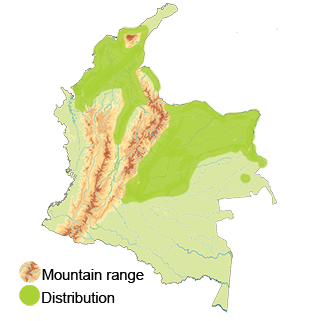Scaled Dove
The Scaled Dove (Columbina squammata) Read in Spanish
Appearance: The Scaled Dove is a small bird, about 17-20 cm in length, with a distinctive appearance characterized by its scaled plumage on the neck and chest. It has a grayish-brown overall coloration with intricate scaling in white and black on its neck and chest, giving it its name. The face is pale with a pinkish tinge around the eye. The underside of the tail is buff-colored, and the wings display a subtle scaled pattern.
Habitat: The Scaled Dove inhabits a variety of habitats, including open woodlands, savannas, dry scrublands, agricultural areas, and urban environments. These doves are commonly found in arid regions and semi-open landscapes with scattered vegetation, where they can forage for seeds and grains.
Behavior: Scaled Doves are typically seen in pairs or small groups foraging on the ground for seeds, grains, and small insects. They are known for their swift, direct flight and their habit of perching in exposed locations such as fences, power lines, or treetops. Scaled Doves have a soft, cooing call that is often heard during courtship displays and while communicating with other doves.
Breeding: The breeding season of Scaled Doves in Colombia may vary based on local climatic conditions and food availability. They typically build simple nests in trees, shrubs, or other elevated locations using twigs, grass, and leaves. The female usually lays 2 eggs, and both parents take turns incubating the eggs and caring for the young chicks.
Conservation Status: The Scaled Dove is considered to be a species of least concern according to the IUCN Red List.
Distribution
The Scaled Dove (Columbina squammata)
Andean Region: The Andean region of Colombia, which includes the Andes mountain range and its surrounding areas, provides suitable habitat for the Scaled Dove. Scaled Doves can be found in open woodlands, scrublands, and agricultural areas in the Andean foothills and valleys.
Caribbean Region: The Caribbean region of Colombia, along the northern coast bordering the Caribbean Sea, also supports populations of Scaled Doves. These doves can be observed in dry scrublands, savannas, and agricultural landscapes in the Caribbean region.
Pacific Region: The Pacific region of Colombia, located along the western coast near the Pacific Ocean, is another area where Scaled Doves are present. Scaled Doves may inhabit open woodlands, grasslands, and agricultural areas in the Pacific region.
Orinoquía Region: The Orinoquía region, which covers eastern Colombia and includes vast plains and grasslands, is part of the distribution range of the Scaled Dove. In the Orinoquía region, Scaled Doves can be found in savannas, grasslands, and agricultural fields.
Amazon Region: The Amazon region of Colombia, characterized by tropical rainforests and river systems, may have localized populations of Scaled Doves. Scaled Doves in the Amazon region are likely to occur in edge habitats, riverine forests, and open areas within the rainforest.
Central Region: The central region of Colombia, which includes areas around the capital city of Bogotá and its surroundings, may also host populations of Scaled Doves. Scaled Doves in the central region can be found in open woodlands, urban parks, gardens, and agricultural landscapes.
Taxonomy
The Scaled Dove (Columbina squammata)
- Kingdom: Animalia
- Phylum: Chordata
- Class: Aves (Birds)
- Order: Columbiformes
- Family: Columbidae
- Genus: Columbina
- Species: Columbina squammata
Vocalization
The Scaled Dove (Columbina squammata)
- Cooing Call: The Scaled Dove produces a soft, rhythmic cooing call that is often described as melodious and soothing. The cooing call is typically heard during courtship displays, as a way to attract mates, establish pair bonds, and communicate within the pair. The cooing call of the Scaled Dove can vary in pitch and duration, and it is a common sound in the habitats where these doves are found.
- Advertising Call: In addition to the cooing call, the Scaled Dove may use an advertising call to announce its presence and defend its territory. The advertising call can be a series of short coos or a rapid burst of repetitive notes, signaling to other doves in the vicinity about its territorial boundaries or availability for mating.
- Alarm Call: When the Scaled Dove detects a potential threat or perceives danger, it may emit an alarm call to alert other doves and nearby wildlife. The alarm call of the Scaled Dove is usually sharper and more urgent than its other vocalizations, serving as a warning signal to take evasive action.
- Contact Calls: Scaled Doves also use contact calls to maintain communication with their mate or other members of their group. These contact calls are softer, simpler sounds compared to the cooing call, often exchanged between birds in close proximity to reinforce social bonds and coordinate activities.
- Nesting Calls: During the breeding season, Scaled Doves may produce specific vocalizations associated with nest-building, incubation, and chick care. These nesting calls can be used by the breeding pair to coordinate their activities, share parental duties, and signal the presence of the nesting site to their offspring.




